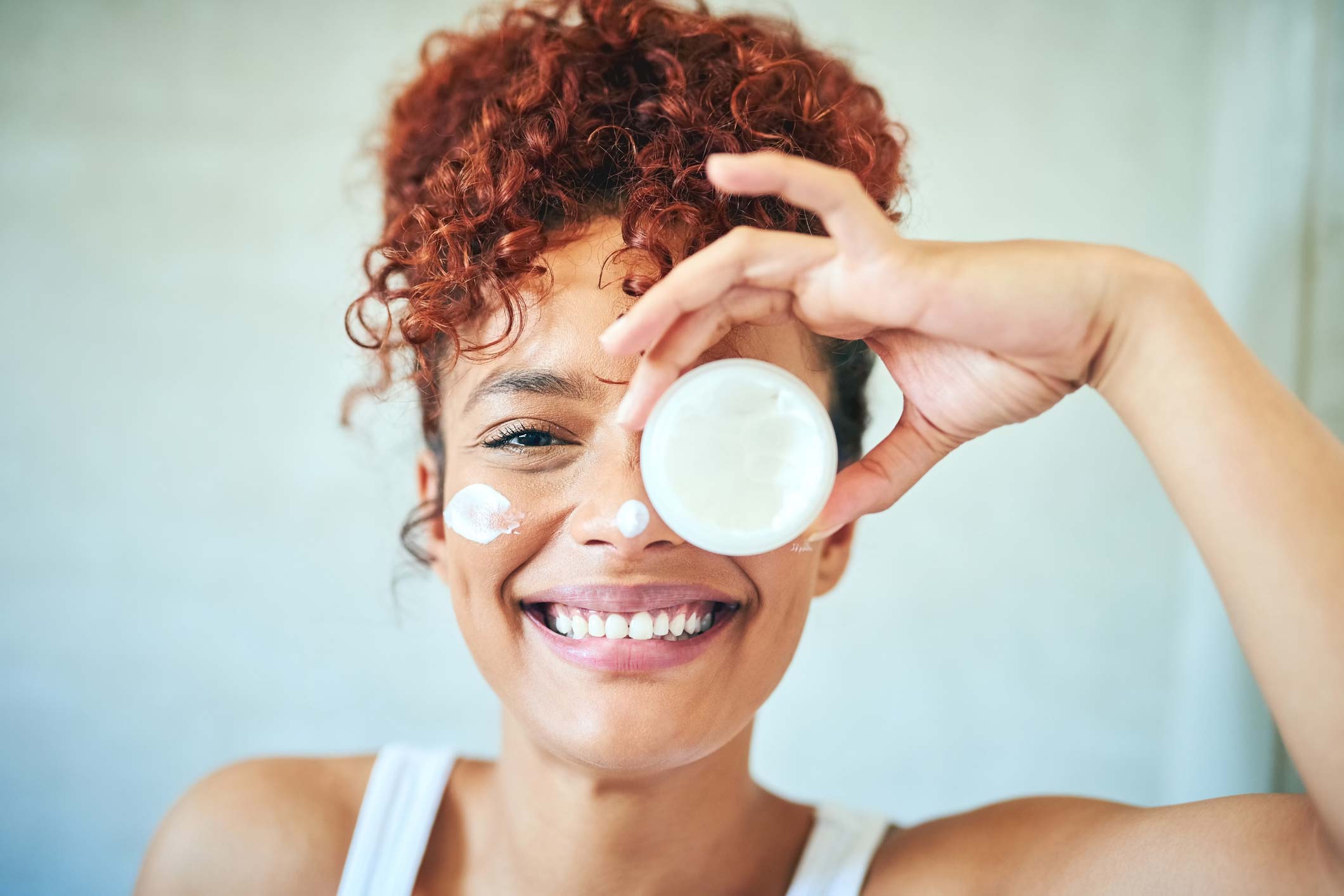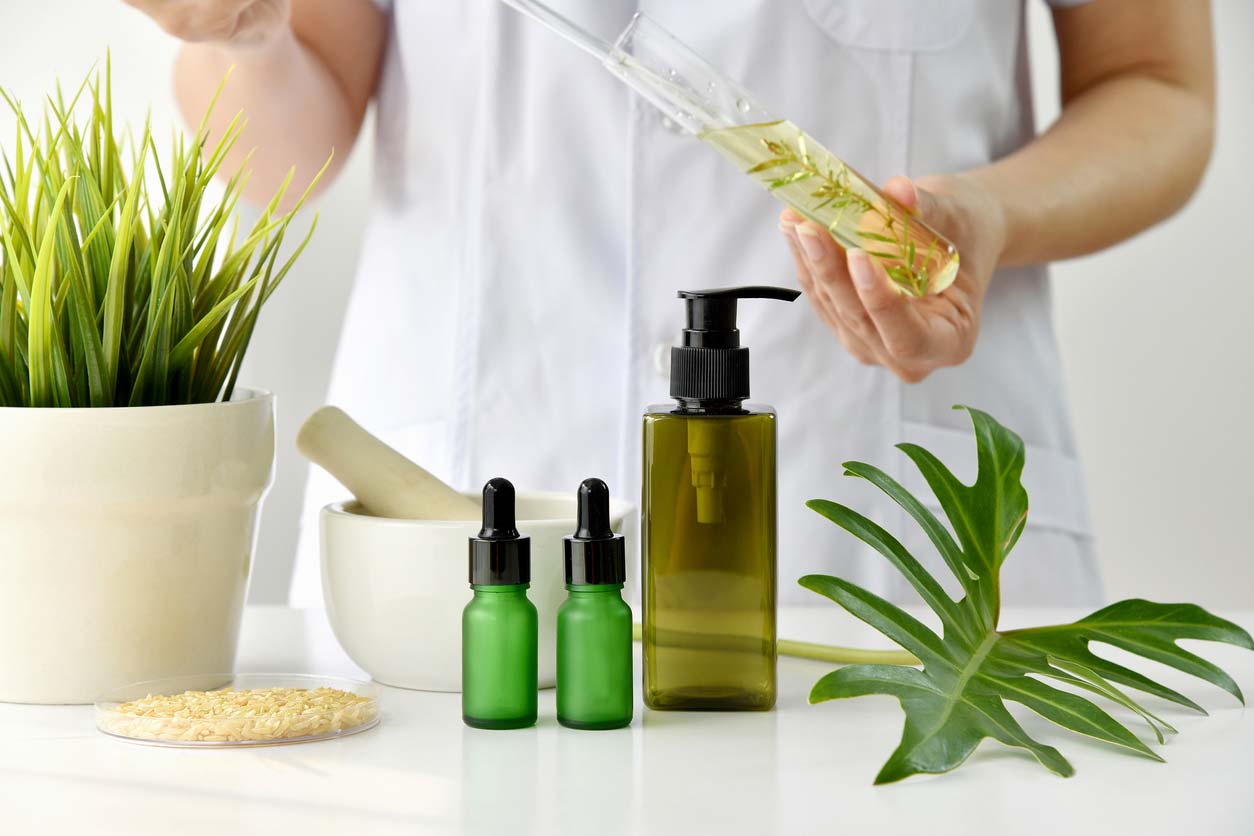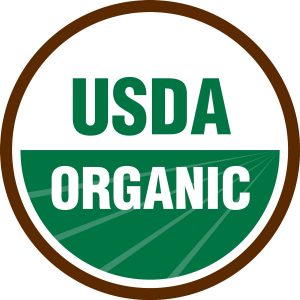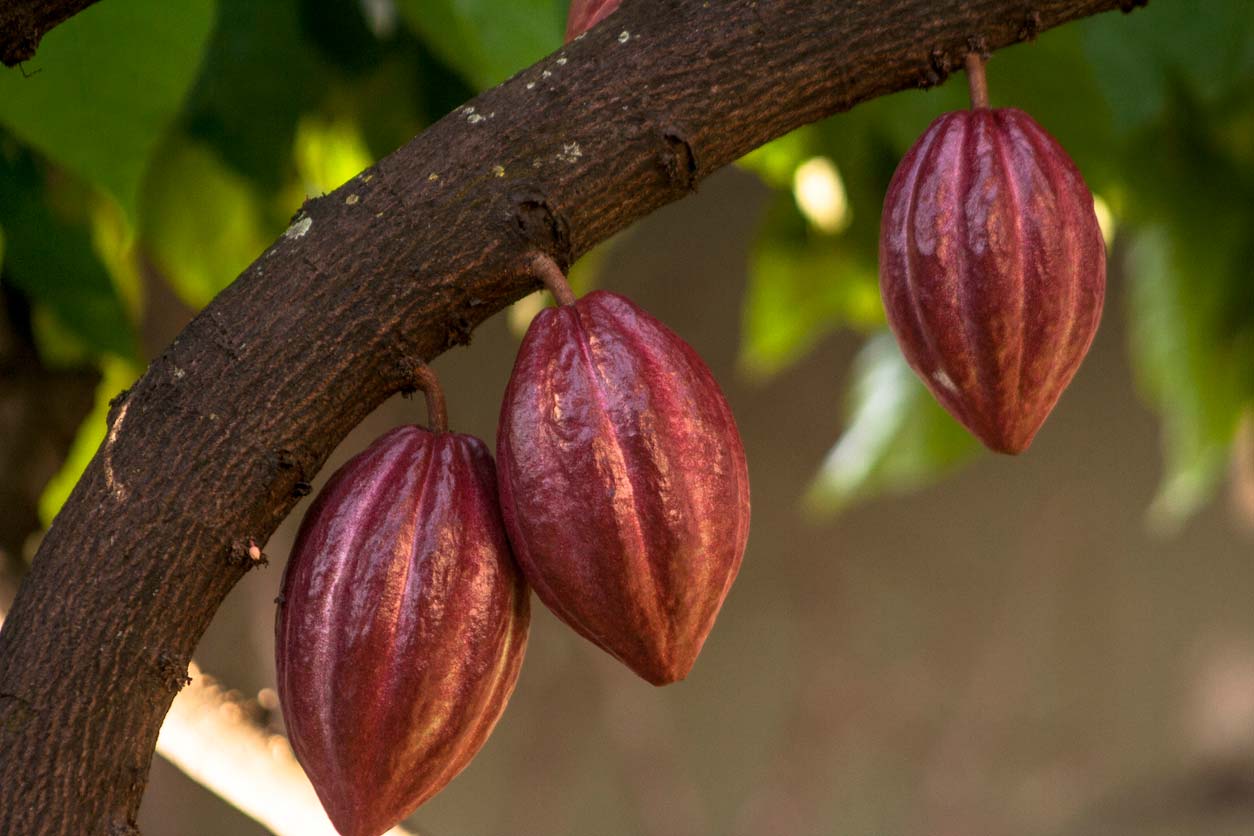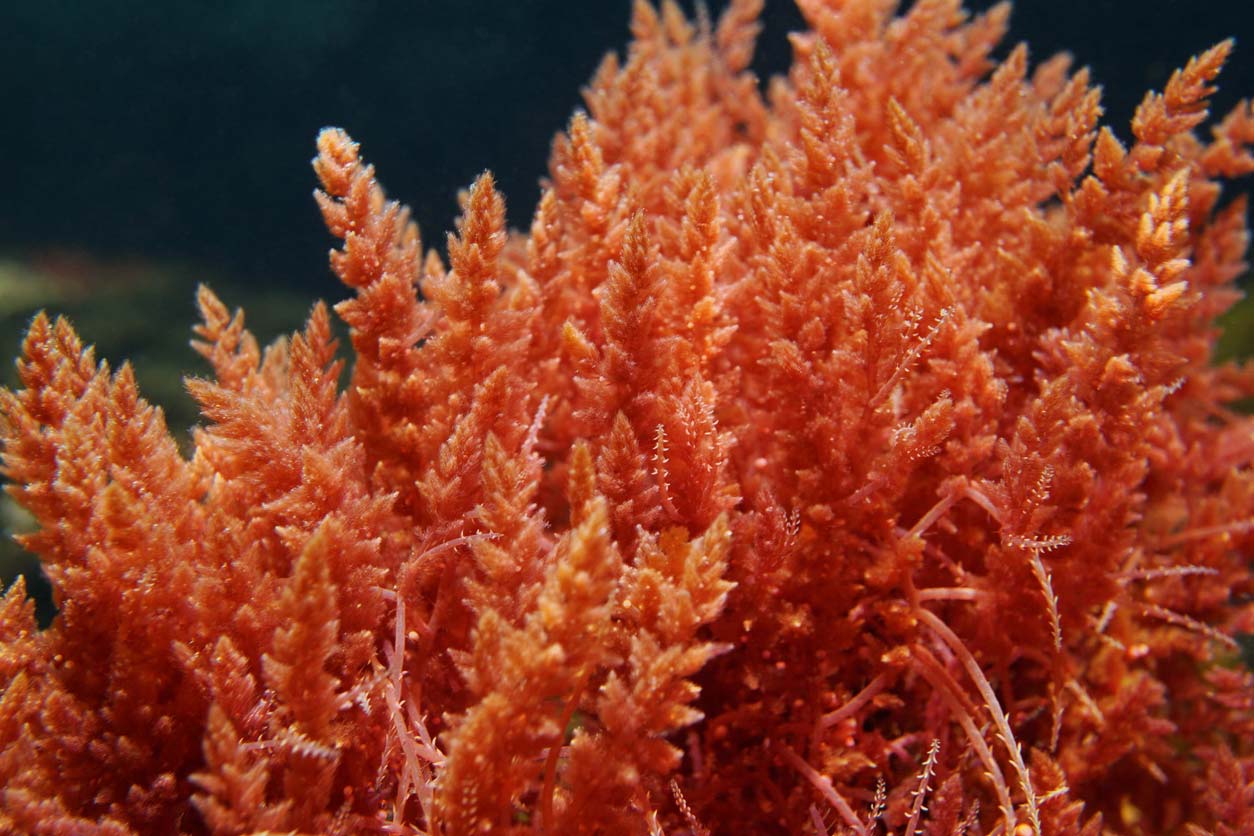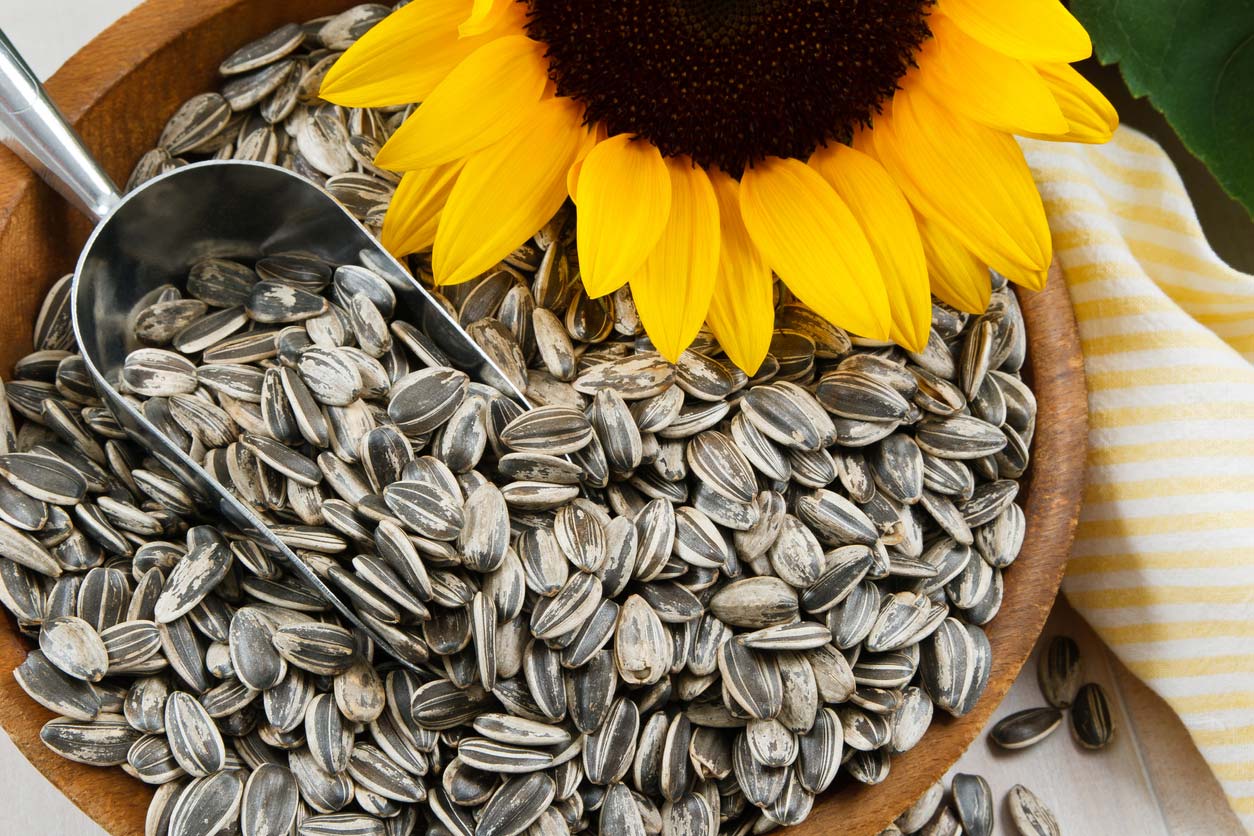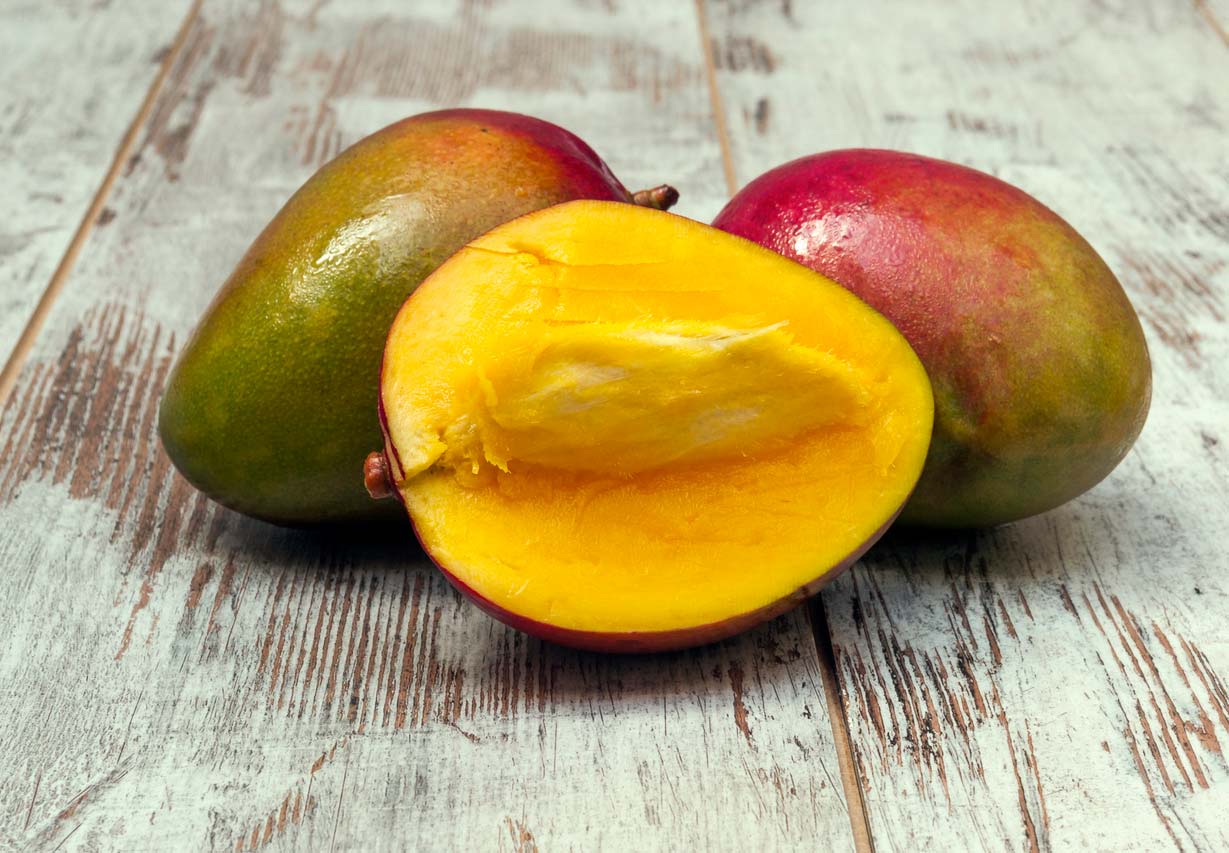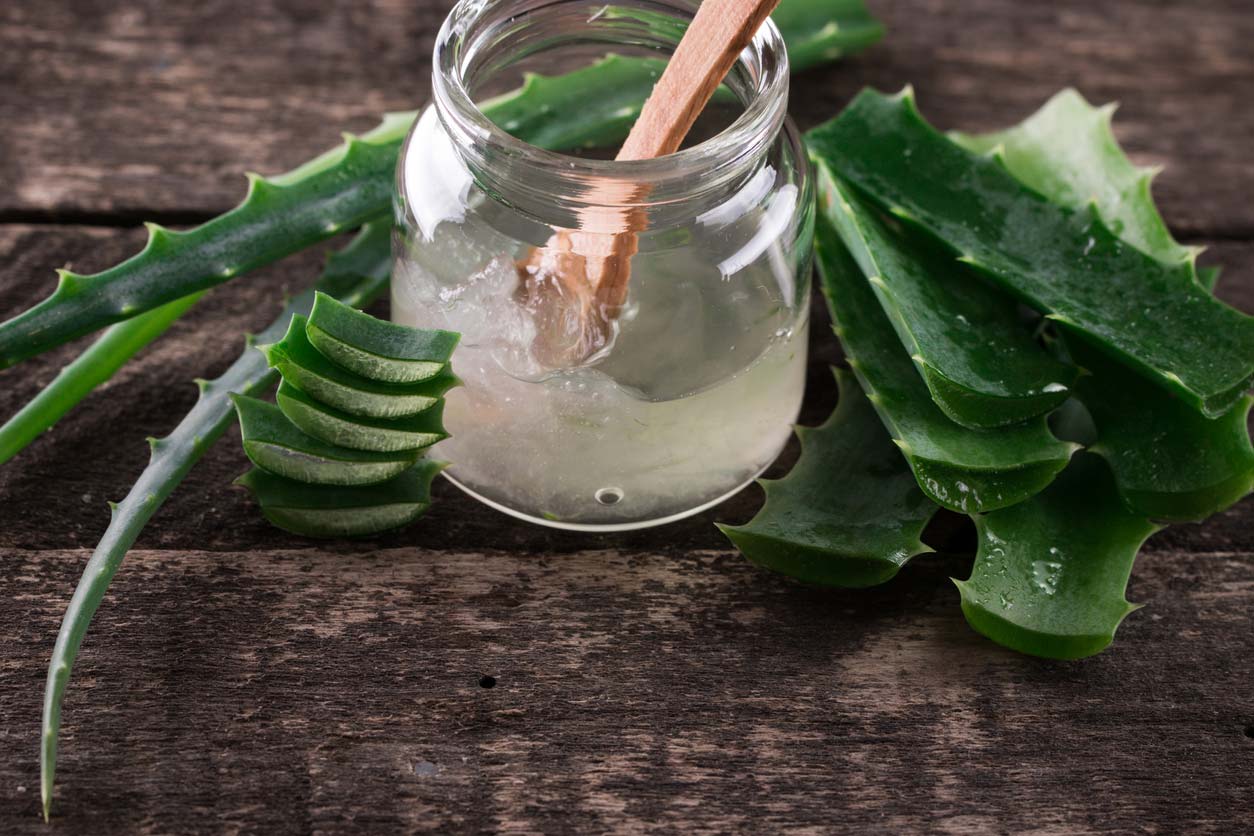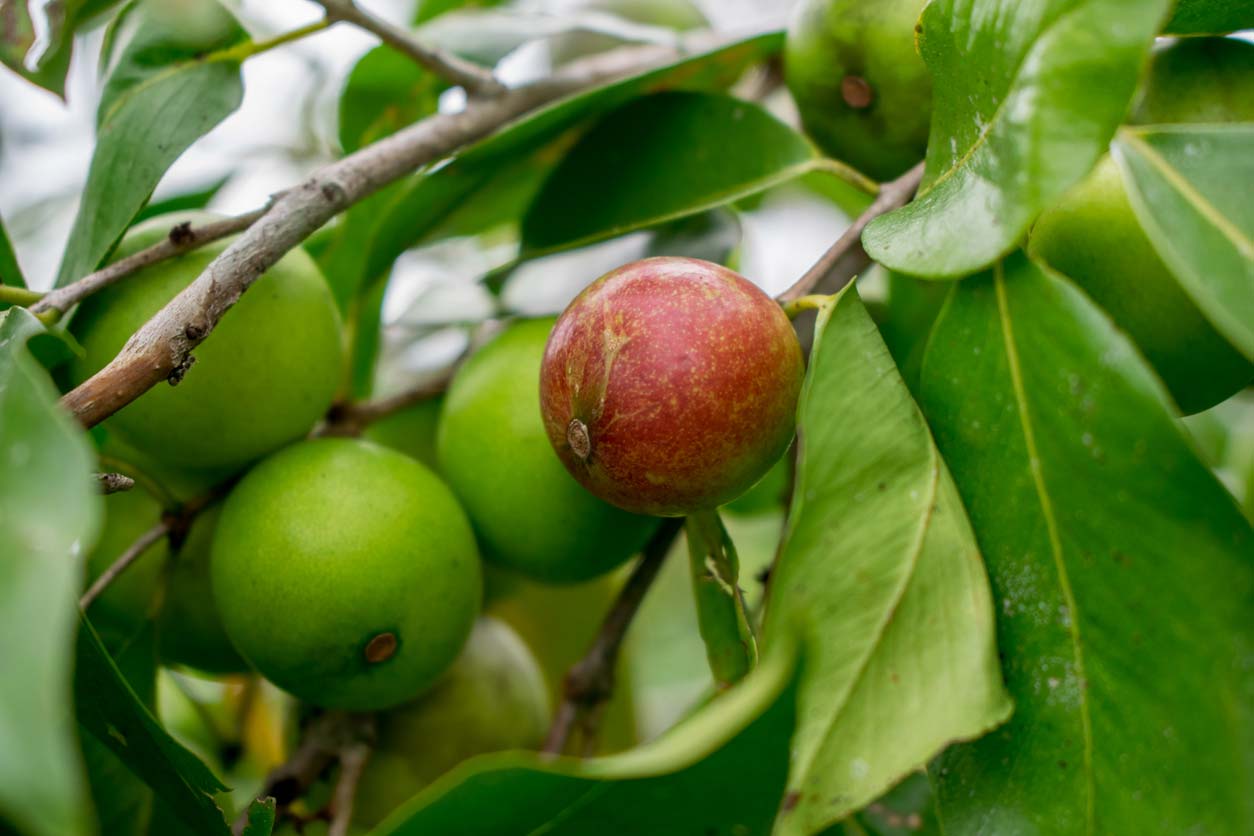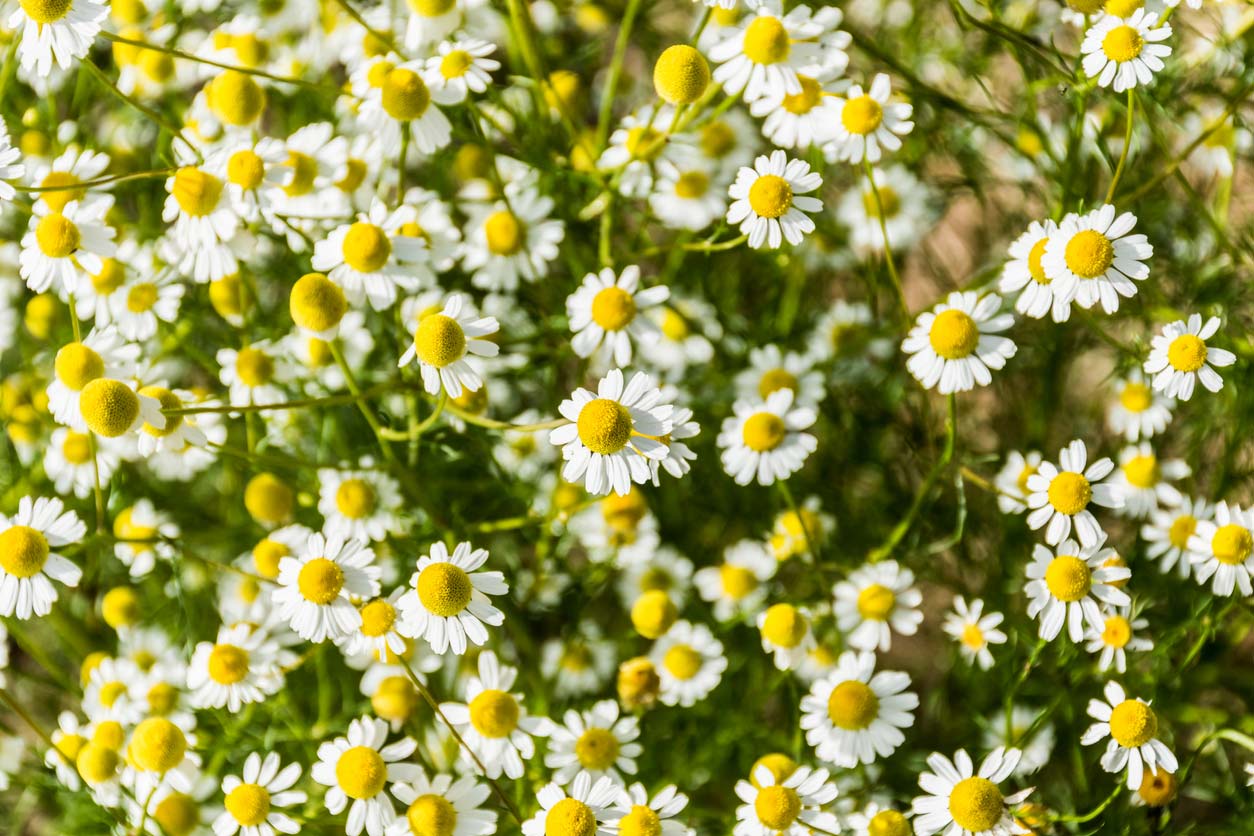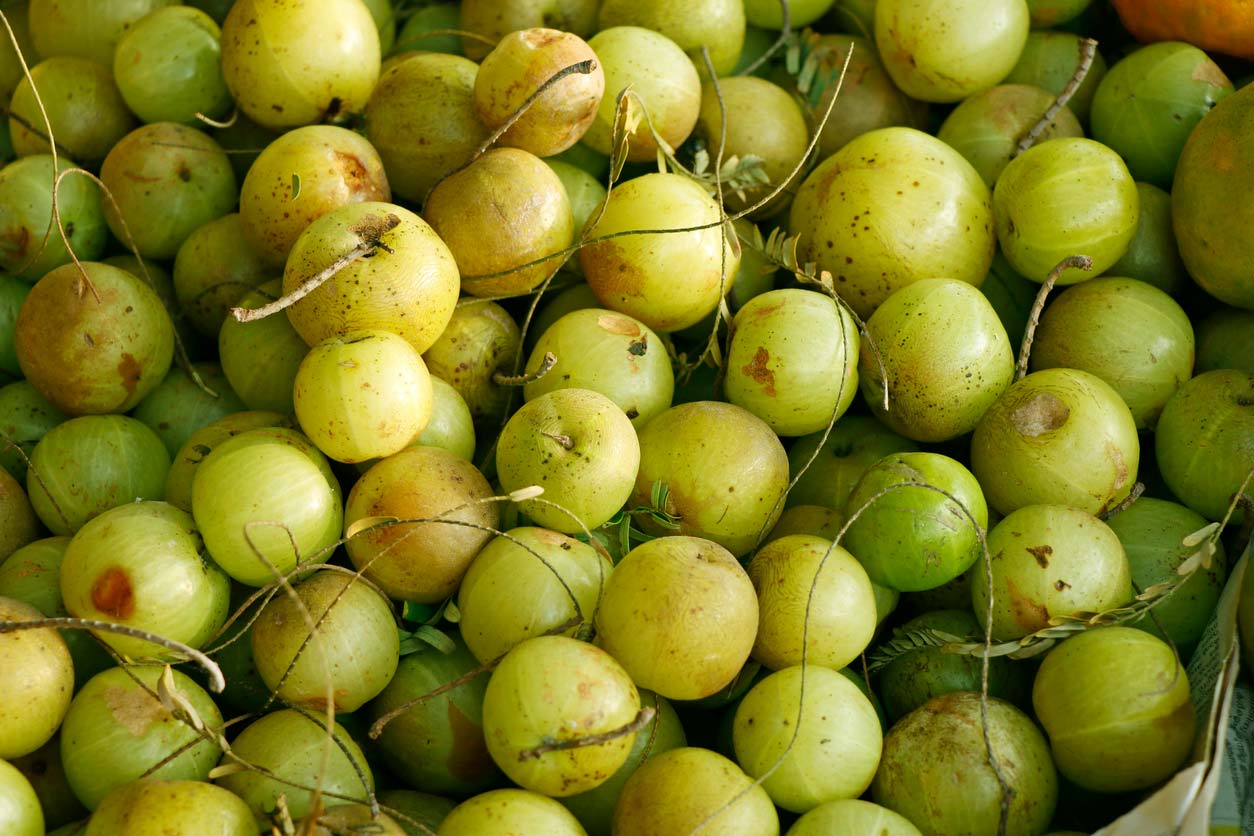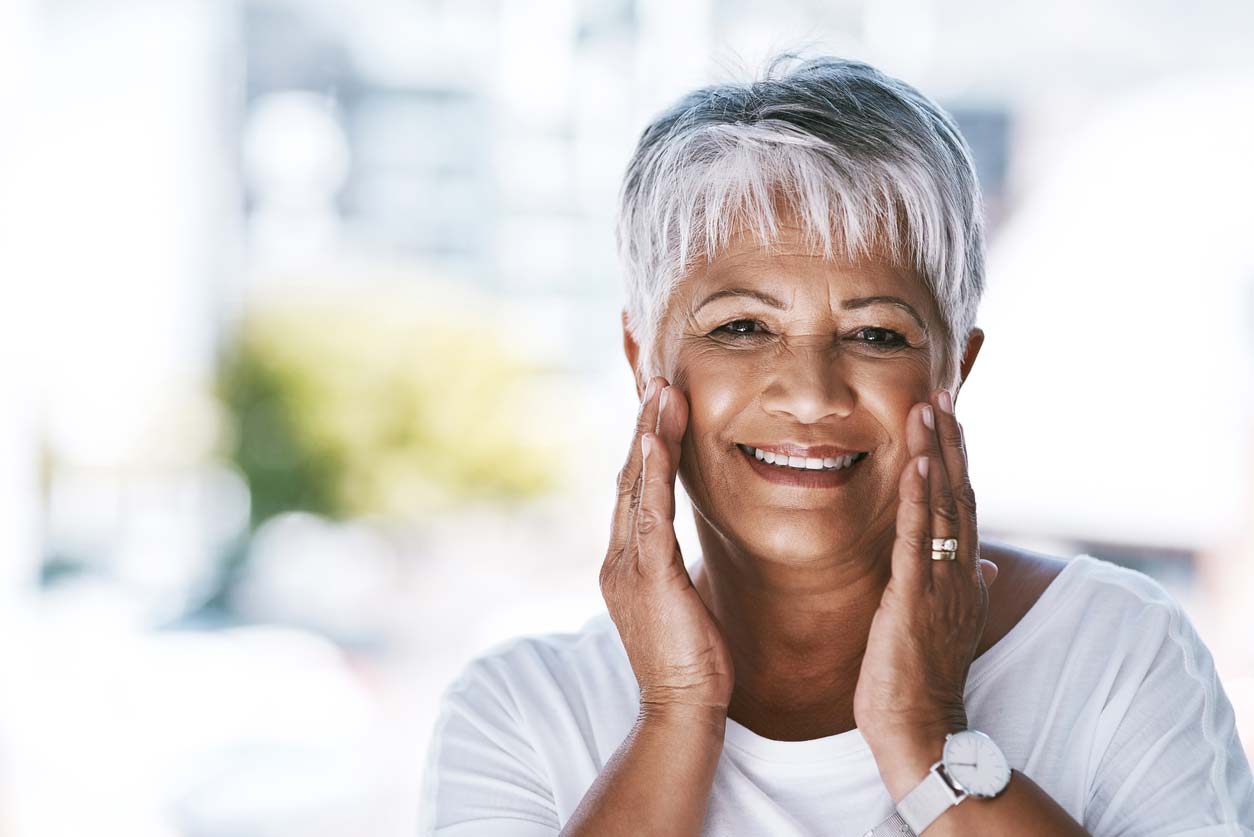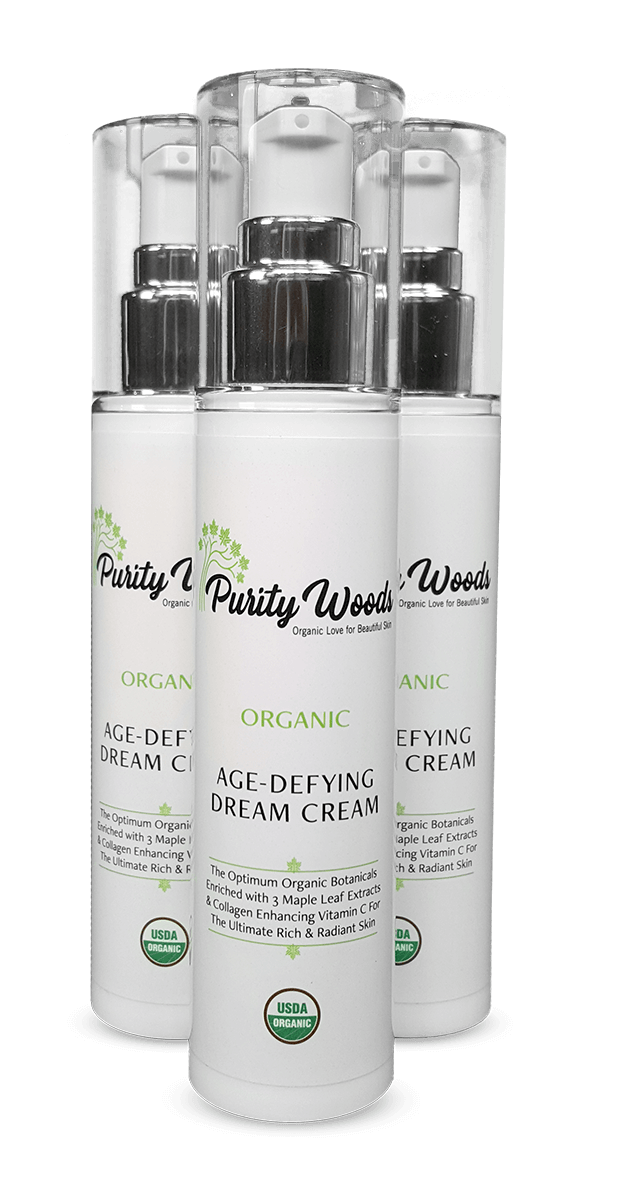By Brian Vaszily, Founder of Purity Woods. This article concludes with a link to a Purity Woods product that Brian created that contains the ten ingredients discussed.
Great-looking Skin Equals a Powerful Immune System
Skin is your body’s largest organ and one of the most crucial parts of your immune system.
When you take proper care of it, like using clean skincare products, the most gratifying reward may be that you look young and healthy. But healthy skin is more than skin-deep. The most important reward is that you’re taking powerful steps to defend against — and possibly even help overcome — a wide range of health issues.
You may have heard of probiotics and the “microbiome” inside your gut. Well, there’s an equally important microbiome on your skin that consists of around 1,000 species of good bacteria. And that’s just one of the key components of healthy, beautiful, and toxin-free skin.
Most People Today Are Unknowingly Abusing Their Skin
Skin abuse comes from two directions. First and most important is the inside-out. The same things that are good for your overall health, like eating plenty of fresh organic fruits and vegetables, exercising, and getting deep and restful sleep, are also good for your skin.
But that’s not the whole story. If you’re like most people in the modern world, your skin is constantly bombarded by potential toxins in the air and in the water. But the very things we put on our skin to protect it from these unavoidable stressors can also pose a toxic burden to our skin as well as to our overall health.
Why Clean Skincare Is So Important
If you’re not very carefully reading the labels of everything you apply to your skin, chances are very high you are unknowingly abusing your skin from the outside-in.
When you apply creams, serums, makeup, and other cosmetics, always remember that your skin eats what you put on it.
Now, just like your mouth can’t consume a watermelon whole, your skin can’t eat everything applied to it.
The molecules have to be small enough for the skin to consume, which is why, for example, applying collagen onto the skin is worthless. Collagen molecules are far too large to penetrate the skin.
However, many of the over 1,400 chemicals allowed in cosmetics in the US have molecules that are small enough for your skin to absorb. And the bad news (for Americans!) is that many of them have also been banned by over 40 other countries.
When you feed your skin problematic chemicals, it can be even worse than if you were eating them with your mouth.
Why?
Because when you consume something through your mouth, it goes through a rather long digestive system that includes various “barriers” whose purpose is to weed out and dispose of toxins — most notably through your liver.
With your skin, though, whatever it eats can make its way directly into your bloodstream.
Artificial Chemicals are Wreaking Havoc on Your Skin
So, with that in mind, please take note…
Each day, the average woman in the US uses 12 different cosmetic and makeup products containing an average of 168 ingredients.
Many of these ingredients are artificial chemicals.
If you take a close look at those cosmetic labels, even on many products proclaiming themselves “natural” or “organic,” chances are you will find problematic chemicals listed in the fine print.
And common sense would dictate that — in the same way, we now know that eating foods with artificial ingredients is not good for you — feeding your skin artificial anything is not good for you, either.
Sure, some of these artificial ingredients may provide very short-term benefits, but the havoc they wreak on your skin and your overall health can be all-too-real.
And this means not merely making your skin look older than it should over the longer term. It also means harming your skin’s microbiome and otherwise degrading your skin’s ability to protect against toxins.
From 2003 to 2019, TEDx produced and shared scientific evidence of endocrine disruption with nonprofit organizations and government agencies. They identified over 200 possible endocrine-disrupting chemicals that are still in widespread use. Many of them are in skincare products. And they can wreak havoc on your hormones — potentially leading to a wide range of serious health issues, from irregular periods and acne to birth defects and cancer.
(And, by the way, in the case of skincare products, many contain penetration enhancers designed to make chemicals infiltrate your skin deeper… That means they can push those toxins into your body even more aggressively!)
5 Top Skincare Ingredient Offenders
There are many “worst-offender” chemicals to watch out for in cosmetic and personal care labels. And to list them all here would turn this article into something of an encyclopedia.
The smartest approach, as you’ll see in more detail below, is to only choose products that are USDA Certified Organic (or equivalent independent certifications in other countries) to ensure 95% or more truly safe, organic ingredients.
With that noted, here are five common offenders to watch out for:
1. Parabens
Parabens are cheap preservatives that are put in a lot of cosmetic products. But they mimic estrogen by binding to estrogen receptors on cells. Research has shown that the perceived influx of estrogen may, in some cases, trigger reactions such as increasing breast cell division and the growth of tumors.
2. “Fragrance”
What’s in it? No one can be sure. Companies are not required to disclose the chemicals they use to make up a “fragrance” in their products. But suffice it to say, if all the label says is “fragrance,” you might do well to assume that it’s a noxious chemical cocktail, linked to allergic reactions.
3. Phthalates
Avoid phthalates at all costs. These chemicals are associated with a range of issues, including reproductive dysfunction, congenital disabilities, asthma, type 2 diabetes, and ADHD. They’re used in many products like moisturizers and skin lotions to make them more liquid-like.
4. Triclosan or Microban
These chemicals are used to prevent bacterial growth. On the surface, you’d think that would be a good thing. Remember, though; your skin contains a microbiome of beneficial bacteria. And triclosan and microban don’t discriminate between good and bad bacteria. They may even be contributing to the rise of antibiotic-resistant “superbugs” and other dangerous illnesses.
5. Sodium Lauryl Sulfate (SLS)
SLS is a common ingredient in a range of cosmetic and personal care products. It makes soaps foam and also acts as a thickening agent. But it can be dangerous, thanks to byproducts in the manufacturing process that have been linked to kidney and liver dysfunction.
Beware of Greenwashing
Like the conventional food and pharmaceutical industries, the conventional cosmetic industry is a powerful beast, producing over $170 billion in annual sales.
They don’t want their highly profitable boat rocked.
In other words, just like other aspects of your health, it’s up to you to make the changes you need to make because the conventional cosmetic industry is not going to do it for you anytime soon.
You might think that you can avoid dangerous chemicals by sticking to cosmetics labeled “organic” or “wild-crafted” or “natural.” But there’s something crucial you need to know:
Words like “organic” and “wild-crafted” and “natural” are thrown about very loosely to cajole people into buying.
When you look closely at the label, though, it may refer to only one or several ingredients being organic.
Worse still, beyond this one or several organic ingredients, it may also contain a variety of synthetic and harmful chemicals.
This is often referred to as “greenwashing.” But I can think of a few other words for it too, like bamboozling and conning.
How can they get away with it?
Well, in the cosmetics industry, especially, these sorts of claims are not highly regulated and largely have no legal definitions.
Even “natural” beauty cream may contain cancer-causing petrochemicals.
Here’s the Great News
The great news is that your skin is highly receptive to positive change.
Regardless of how old you are or what issues you may have, your skin may be the fastest and easiest thing you can improve on your body.
This is great news for your health because the skin is such a crucial component of your immune system. And it’s also great news for your appearance because the right changes and habits will lead to your healthiest-looking skin (and once people take the right steps, they’re often pleasantly astounded at just how healthy-looking that is!).
The 3 “Golden Rules” for Clean Skincare
Here are three Golden Rules to follow when looking for clean skincare products:
1. Look at the ingredients label.
If you are looking at an advertisement for the product online, does it show the full ingredient list of the product, such as in the FAQ area at the bottom of the page? (If it doesn’t show the full ingredient label, there’s typically a reason.)
2. Choose only certified organic products.
Look for the USDA Certified Organic designation or a similar designation per your country that guarantees verification independent of the company.
For independent verification as USDA Certified Organic, it means the product must prove:
- It contains at least 95% true organic ingredients.
- The remaining 5% of ingredients are on an approved safe list.
- It is free of synthetic additives, including pesticides, chemical fertilizers, petrochemicals, and dyes.
- It wasn’t processed using industrial solvents or irradiation.
- It’s free of genetically modified organisms (GMOs).
On farms that supply USDA Certified Organic ingredients, organic producers use more natural processes and materials in their farming systems. These processes contribute to soil health, manage pests and weeds more naturally, and promote the conservation of biological diversity and ecological balance.
USDA Certified Organic standards prohibit the use of sewage sludge, synthetic fertilizers, and genetic engineering. They also require producers to maintain the integrity of organic crops, preventing contact between organic and conventionally grown crops, as well as contact with prohibited pesticides and fertilizers.
3. Feed your skin healthy, nourishing ingredients.
So what do you want to feed your skin? Good, healthy, nourishing (and organically grown) skin food. In the section below, we’ll cover clean, safe ingredients to look for when choosing skincare products.
Top 10 Anti-Aging Ingredients Your Skin Will Love
Below are 10 of nature’s most powerful ingredients to support healthy, radiant skin and clean beauty, presented in countdown style to the big #1.
However, of course, there is some subjectivity to any list like this.
Everyone’s skin shares many similarities, but each person’s skin — and what each person would like to improve with their skin — is also unique. As such, certain ingredients may rank higher for you personally.
Chosen for their effectiveness and the range of benefits they can provide, these are the top 10 natural anti-aging ingredients to look for in clean beauty products.
10. Camellia Seed Oil (Camellia oleifera)
Also known as the oil-seed camellia and tea oil camellia, this remarkable oil comes from cold-pressing the seeds of camellia oleifera, a flowering evergreen shrub native to Asia that the Japanese call Tsubaki, or “rose of winter.”
Camellia seed oil has a molecular structure and weight similar to the skin’s natural oil, so it is absorbed deeply into the skin.
Rich in vitamins A, B, C, D, and E, camellia seed oil is excellent for moisturizing skin, helping to achieve velvety smoothness. It also contains nutrients that strongly support a youthful glow and combat signs of aging.
Camellia seed oil is particularly rich in squalene, which is an important part of the skin’s hydration system and which helps protect skin against external environmental elements.
9. Cocoa Seed Butter (Theobroma cacao)
Hey, if it comes from the same plant as chocolate — the Cacao tree — it’s got to be good, right? Well, this classic skincare ingredient truly is.
Cocoa seed butter is rich in natural compounds that promote soft, supple, and radiant-looking skin. It’s high in oleic acids, linoleic acid, palmitoleic acid, vitamin E, and vitamin K, which can reduce the appearance of aging from wrinkles and fine lines.
Cocoa seed butter is also high in stearic acid, which can actually help eliminate dirt, sweat, and excess sebum from the skin. And it contains compounds that can help lock moisture into the skin, tighten the skin, enhance the skin’s appearance of brightness, and even reduce unhealthy inflammation.
8. Astaxanthin Extract
Sun is a wonderful way to expand your vitamin D levels. But the downside is that over the years, too much sun exposure can get your skin in trouble. Especially if you occasionally get burned.
In fact, one of the biggest reasons skin can look wrinkled, weathered, and otherwise “old” is because of excess sun.
Enter the superstar clean skincare ingredient called astaxanthin.
Astaxanthin is formed naturally in certain types of algae. (Interestingly, sea creatures such as wild salmon and shrimp get their pink color by consuming these algae.)
It’s a highly effective “carotenoid,” an antioxidant that provides superior protection for the skin. And it has powerful blocking properties against the sun’s UV rays. Astaxanthin supports the skin in combating photoaging and that “weathered look,” such as the appearance of dark spots and wrinkles from sun-related damage.
Astaxanthin can also help with elasticity, skin moisture and moisture retention, and in promoting skin smoothness while decreasing the appearance of fine lines and wrinkles.
7. Sunflower Seed Oil (Helianthus annuus)
Sunflower oil, reputedly prized for centuries by the Iroquois, is rich in vitamin E, an antioxidant powerhouse that can also ward off damage caused by overexposure to the sun.
What’s more, sunflower seed oil contains beneficial linoleic acid — even more than olive oil — which has skin barrier-enhancing properties.
In fact, when adult volunteers applied six drops of sunflower seed oil to their forearm twice a day for five weeks, they had improved integrity of the outer layer of their skin as well as improved hydration.
6. Mango Seed Butter (Mangifera indica)
Mango butter, which you can find cold-pressed from the seed, has exceptional skin-enhancing effects. Rich in vitamin C, it can help enhance collagen synthesis for smoother, plumper, and brighter-looking skin. And it may act as a protective factor against skin damage from the sun.
Mango seed butter provides supreme moisturizing and soothing benefits. It provides your skin with an abundance of antioxidants and vitamins, including vitamin A, which is known for smoothing the appearance of fine lines.
Fun fact: In India, the mango tree is a sacred symbol of love. And some people believe that mango trees can even grant wishes. If your wish is for healthier skin, perhaps your wish can be granted, too!
5. Aloe Vera Juice (Aloe barbadensis)
If you have an aloe vera plant at home, you can cut off a leaf and scoop out the gel inside.
Applying this vitamin- and enzyme-rich gel to your skin may help with exfoliation and provide powerful anti-inflammatory and soothing effects (it’s great for anti-aging and, as many already know, also great for helping to heal cuts and other skin wounds.)
It can also potentially reduce the appearance of wrinkles and boost elasticity in human skin when taken orally. Interestingly, researchers have found that consuming aloe gel may also be beneficial because it may increase collagen production and decrease the collagen-degrading MMP-1 gene expression.
Note: Aloe vera can have a laxative effect when taken internally, so start with a very small amount to avoid any… ahem… surprises.
4. Camu Camu Extract (Myrciaria dubia)
Camu camu is fun to say, but that’s the least of its good points. It’s a low-growing shrub that grows near rivers in the western and central Amazon basin in South America. And its berries might be even more of a nutrition powerhouse for you than the famed açai berry.
Camu camu is a rich source of polyphenols, including flavonoids, phenolic acids, tannins, stilbenes, and lignans. With a higher phenolic and vitamin C content than many other tropical fruits, camu camu is bursting with antioxidant and anti-inflammatory power.
Applying camu camu extract to your skin may provide a range of powerful anti-aging benefits, such as lightening the appearance of dark spots, smoothing the appearance of wrinkles, and evening out your complexion.
Along with the amazing benefits of applying it to your skin, eating camu camu has shown strong potential to help with weight loss and fight excess inflammation, too.
As noted in the Journal of Alternative and Complementary Medicine:
“[T]here is a pressing need to increase the visibility of natural products such as camu camu to point to their potential benefits in populations that are not only aging but also experiencing the negative effect of inflammatory and oxidative conditions.”
3. German Chamomile Extract (Chamomilla recutita)
Chamomilla recutita (Matricaria), also known as German chamomile, is not just another pretty flower.
This plant has very impressive antioxidant, antimicrobial, and anti-inflammatory effects.
While chamomile tea and extracts may be useful for dampening systemic inflammation, chamomile applied to skin penetrates below your skin’s surface to the deeper layers. It also has a soothing, anti-inflammatory effect that helps calm dry or irritated skin areas.
Chamomile can also be excellent for promoting the appearance of tighter, healthier, and “plump-looking” skin.
2. Indian Gooseberry Extract (Phyllanthus emblica)
Indian gooseberry is a medicinal plant traditionally used in Ayurvedic systems of medicine to restore lost vitality and vigor.
Ayurvedic texts have long considered Indian gooseberry to be a Rasayana, which is a compound ideal for longevity and rejuvenation. And today, science is showing that this is precisely the case.
Indian gooseberry is a very rich source of vitamin C, amino acids, minerals, and phenolic compounds – all reasons why it can be so beneficial to apply to your skin. It stimulates pro-collagen (a precursor of collagen) and may protect your skin from sun damage, helping to prevent dark spots and wrinkles.
It’s also known for shrinking and unclogging your pores, leading to a fresher, smoother skin appearance.
1. Maple Leaf Extract (Acer rubrum, Acer saccharum, Acer pennsylvanicum)
Native Americans have long treasured maple leaves for their healing properties. Modern science is finally catching up and seems to be in total agreement.
New research shows that maple leaf extracts may be among the closest things we have on earth to a real fountain of youth!
You see, it turns out that maple leaves contain phenolic compounds that can boost elastin and may restore the look of youth to your skin better than anything else out there.
When researchers looked in detail at red maple leaves, they found 106 such compounds, including 11 that may have never been discovered before and 75 that weren’t known to exist in red maple until now.
Now, perhaps THE key reason skin can increasingly look wrinkled, saggy, and otherwise “old” is because the elastin in skin that maintains skin’s flexibility increasingly breaks down.
Well, certain glucitol-core-containing “gallotannins” in red maple leaves were even found to inhibit this breakdown of elastin in the skin, and at the same time, they may also fight skin inflammation and lighten age spots.
The researchers described them as having the potential to tighten up skin like a plant-based Botox, and with just topical application — not an injection.
Love Your Skin
When you eat the right foods, get plenty of sleep, drink plenty of healthy fluids, and avoid excessive sun exposure, you can support healthy skin and a healthy life. And if you want to go further, you can feed your skin some of the healthy and non-toxic plant compounds proven to support elasticity, vibrancy, and health for the largest organ in (or in this case on) your body.
Editor’s Note: A Clean Skincare Resource
Tell us in the comments:
- Were you aware that artificial chemicals could damage your skin and your health?
- Do you read the label and look at the ingredients of skincare products and cosmetics?
- Do you already use products with any of the 10 ingredients listed here? If so, what do you think of them?
Featured image: iStock.com/Moyo Studio
